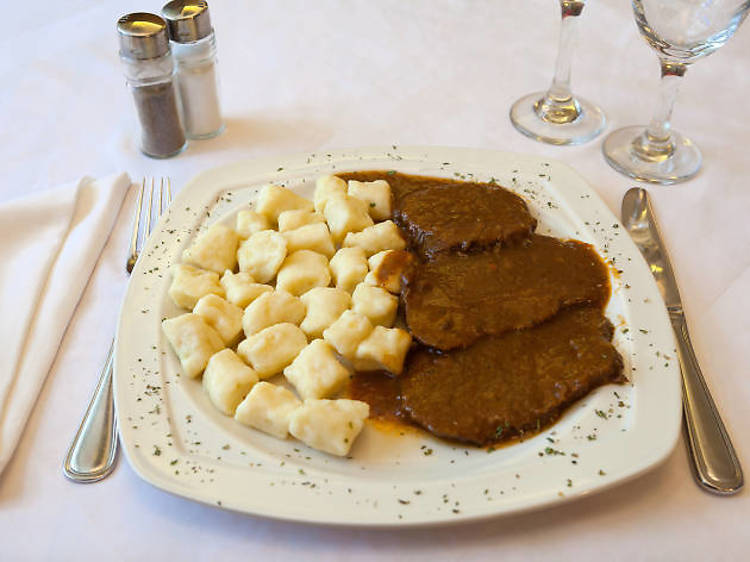Introduction: Croatian cuisine and Peka
Croatian cuisine is a reflection of the country’s diverse cultural influences and is known for its rich and varied flavors. One of the most iconic dishes of Croatian cuisine is Peka, which is a traditional way of cooking meat and vegetables in a special dome-shaped oven. Peka is not only a dish but also an integral part of Croatian culinary heritage, and it has been enjoyed for centuries by people across the country.
The origins and history of Peka
The origins of Peka can be traced back to the rural areas of Dalmatia and Istria, where it was traditionally prepared by shepherds and farmers. The word “Peka” is derived from the Italian word “peccia,” which means a cooking pot made of clay. Over time, Peka became a staple dish in Croatian cuisine, and it is now enjoyed by people across the country, particularly during special occasions such as weddings, christenings, and family gatherings.
What is Peka and how is it made?
Peka is a dish that consists of meat, vegetables, and herbs that are slow-cooked in a dome-shaped oven made of clay or metal. The oven is heated using a combination of wood and charcoal, which gives the dish its distinctive smoky flavor. The meat used in Peka is usually lamb, veal, or chicken, and it is marinated with a mixture of garlic, olive oil, and herbs such as rosemary, thyme, and bay leaves. The vegetables used in Peka are typically potatoes, onions, and bell peppers, which are sliced and arranged on top of the meat.
The ingredients used in Peka
The ingredients used in Peka are simple and wholesome, and they reflect the natural bounty of the Croatian countryside. As mentioned earlier, the meat used in Peka is usually lamb, veal, or chicken, and it is always fresh and locally sourced. The vegetables used in Peka are also fresh and are usually sourced from local farmers’ markets. The herbs used in Peka are typically rosemary, thyme, and bay leaves, which give the dish its distinctive aroma and flavor.
The cooking process of Peka
The cooking process of Peka is a slow and laborious one, but it is worth the wait. First, the meat is marinated for several hours in a mixture of garlic, olive oil, and herbs. Next, the vegetables are sliced and arranged on top of the meat, and the dome-shaped oven is heated using a combination of wood and charcoal. Once the oven is hot enough, the dish is placed inside and left to cook for several hours, during which time the meat and vegetables release their juices and flavors, creating a rich and savory dish.
Popular variations of Peka
There are several variations of Peka, which differ depending on the region and the ingredients used. In some parts of the country, for example, beef or pork is used instead of lamb or veal. In other regions, seafood such as octopus, squid, or fish is used, and the vegetables used in Peka may vary depending on the season. Despite these variations, the basic recipe for Peka remains the same, and the dish is always slow-cooked in a dome-shaped oven.
How Peka is served and eaten
Peka is typically served family-style, with the dish placed on a large platter in the middle of the table. The meat and vegetables are tender and succulent and are served with a side of potatoes or bread. Peka is usually eaten with a glass of red wine, which complements the rich flavors of the dish.
Conclusion: Why Peka is an essential part of Croatian culinary heritage
Peka is a dish that reflects the rich culinary history of Croatia and is an essential part of the country’s culinary heritage. The dish has been enjoyed for centuries by people across the country and is a symbol of community and tradition. Peka is not only a delicious and wholesome dish but also a celebration of the natural bounty of the Croatian countryside and the ingenuity of its people. For these reasons, Peka will continue to be a beloved and cherished dish for generations to come.

